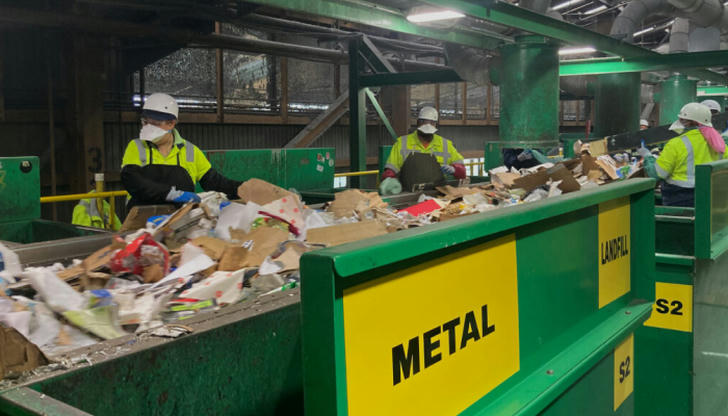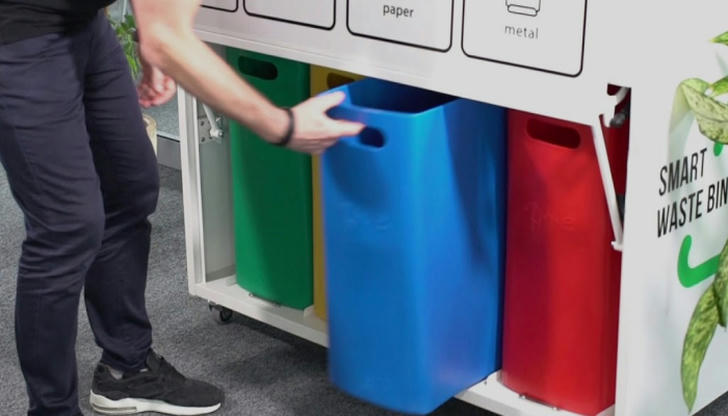A Guide to Garbage Sorter Recruitment
The growing emphasis on sustainability and waste management has elevated the importance of garbage sorters. These workers play a crucial role in separating recyclable materials from trash, ensuring that waste is processed properly, reducing environmental impact, and improving recycling efforts. However, recruiting for garbage sorter positions comes with unique challenges. This article explores the role, the challenges in recruitment, key skills needed, and strategies employers can use to attract and retain the right candidates.
The Importance of Garbage Sorters

As environmental concerns rise, recycling and proper waste management have become a priority for many cities and industries. Garbage sorters are essential in these efforts, ensuring waste is separated into recyclables, compostables, and non-recyclables.
Promoting Sustainability: Garbage sorters help reduce the amount of waste sent to landfills by ensuring recyclable materials are properly sorted for reuse.
Supporting Recycling Programs: By sorting waste, they contribute to more efficient recycling processes, reducing contamination and enhancing material recovery.
Regulatory Compliance: Many regions have stringent waste diversion regulations. Garbage sorters ensure compliance with these standards by ensuring waste is properly categorized and processed.
Creating Jobs: The waste management sector is an important source of employment, offering job opportunities for individuals in various communities.
Recruitment Challenges for Garbage Sorters

While the role of garbage sorters is crucial, there are several challenges involved in recruiting and retaining employees for this position:
1. Physically Demanding Work
Garbage sorting is physically challenging. Workers must stand for long periods, lift heavy bags, and perform repetitive tasks, often under time pressure. For many potential candidates, the physical demands can be a deterrent.
Example: In large recycling facilities, sorters often work long shifts moving and sorting waste without frequent breaks. The physical toll of these tasks can lead to burnout if not managed properly.
2. Low Pay and Limited Benefits
Garbage sorting positions are typically low-wage jobs with few benefits. This makes it difficult to attract candidates, especially in areas with higher living costs.
Example: In many waste management companies, entry-level garbage sorters may earn close to minimum wage, which can make it hard to compete with other industries offering higher-paying roles.
3. Stigma Around the Job
Waste management positions, including garbage sorting, often carry a stigma due to the nature of the work. Many potential applicants might view the job as dirty or unpleasant, leading to reluctance in applying.
Example: Young job seekers or those looking for more prestigious roles might overlook garbage sorting positions due to the perceived stigma associated with manual labor and waste handling.
4. High Turnover Rates
Garbage sorting jobs often experience high turnover rates, largely due to the physically demanding nature of the job, low pay, and limited growth opportunities. This makes it challenging for employers to maintain a stable workforce.
Example: In recycling plants, workers may leave after a few months because of the strain the job places on their bodies or due to better-paying offers elsewhere.
Essential Skills and Qualifications for Garbage Sorters

Despite the challenges, it’s important for employers to focus on finding candidates who possess the right skills for the job. While the position doesn’t require extensive qualifications, certain abilities are crucial for efficiency and safety.
1. Physical Stamina and Endurance
Garbage sorters need physical endurance to handle long shifts and repetitive tasks. The work requires lifting, bending, and constant movement, which can be exhausting over time.
Example: Sorters must be able to lift heavy bags and maneuver large amounts of waste while working long hours, sometimes in fast-paced environments.
2. Attention to Detail
Sorting materials correctly is essential to the recycling process. Sorters must pay attention to detail, ensuring recyclable materials aren’t mixed with trash, which could contaminate the entire batch.
Example: A garbage sorter must recognize whether a container is recyclable or not, and separate it accordingly to prevent contamination in the recycling stream.
3. Knowledge of Recycling Standards
A good garbage sorter needs to be familiar with local recycling regulations. This includes knowing what materials can be recycled and understanding proper disposal methods for hazardous waste.
Example: Sorters working in a large city might need to know the differences between plastics that can be recycled and those that cannot, ensuring that the right materials are placed in the correct bins.
4. Safety Awareness
Garbage sorting can expose workers to hazardous materials, sharp objects, or even toxic substances. Therefore, garbage sorters must understand safety procedures and know how to use protective gear.
Example: Workers may need to wear gloves, masks, and other personal protective equipment (PPE) to protect themselves from hazards like broken glass or chemicals in waste.
5. Reliability and Punctuality
Garbage sorting is often part of a larger waste management schedule. Missing shifts or being late can disrupt the entire process. Reliability and punctuality are critical for maintaining smooth operations.
Example: A late arrival at a recycling facility can delay sorting processes, potentially causing a backlog that affects waste disposal schedules and overall facility efficiency.
Effective Recruitment Strategies

Given the challenges, employers need to adopt creative strategies to attract candidates for garbage sorter positions. Here are some tactics that can help:
1. Offer Competitive Pay and Benefits
While garbage sorting positions tend to be low-wage, offering competitive pay and benefits can make these jobs more attractive. Benefits like health insurance, paid time off, and overtime pay can help differentiate these roles from other low-wage jobs.
Example: A waste management company might offer higher-than-average wages for garbage sorters, along with benefits like health insurance and a retirement plan, to attract more candidates.
2. Promote Career Growth Opportunities
Many potential candidates may overlook these roles because they see them as dead-end jobs. Employers should emphasize opportunities for growth, such as promotions to supervisory roles or cross-training in other aspects of waste management.
Example: A garbage sorter could be promoted to a team leader after gaining experience, or they could move into roles like logistics or plant maintenance.
3. On-the-Job Training
Garbage sorters often require training to become familiar with recycling guidelines, sorting techniques, and safety protocols. Offering training programs not only makes the job easier for new hires but also signals that the employer cares about employee development.
Example: A recycling company could offer hands-on training where new workers are taught how to operate sorting machines or how to identify various recyclable materials.
4. Use Local Job Boards and Community Networks
Targeting local job boards, social media platforms, and community outreach initiatives can help reach potential candidates who are already familiar with the area. Community-focused advertising can attract workers who are committed to the local community.
Example: A waste management company could post job openings at local job fairs, or collaborate with community centers and schools to inform local residents about available positions.
5. Highlight Safety and Worker Support
Safety is a major concern in waste management. Employers can attract candidates by emphasizing the safety measures in place, such as the provision of personal protective equipment (PPE) and ongoing safety training.
Example: A waste management company could highlight its commitment to worker safety by regularly hosting safety workshops and providing PPE to all employees, ensuring they feel secure in their roles.
Retaining Garbage Sorters

Once garbage sorters are recruited, retention is just as important. High turnover can be costly and disrupt operations. Here are some retention strategies:
1. Employee Recognition
Recognizing employees for their hard work can improve morale. Offering small rewards, such as "Employee of the Month" awards, or performance-based bonuses can keep workers motivated.
2. Job Stability
Garbage sorting positions are often viewed as temporary. Offering more permanent contracts or providing long-term job security can improve employee retention.
Example: After a probationary period, a garbage sorter could be offered a permanent contract with additional benefits, encouraging them to stay longer.
3. Create a Positive Work Environment
A supportive and respectful work environment can reduce turnover. Regular check-ins with employees, addressing concerns promptly, and fostering a sense of teamwork can create a positive atmosphere.
Example: A recycling plant that values open communication and feedback from its workers can create a supportive environment that encourages loyalty and job satisfaction.
Conclusion
Recruiting garbage sorters is a crucial part of the waste management process, ensuring that waste is handled properly and recyclable materials are processed efficiently. While recruiting for this role comes with challenges, such as the physically demanding nature of the work and high turnover rates, employers can overcome these obstacles by offering competitive pay, promoting career growth opportunities, and focusing on worker safety. By implementing targeted recruitment and retention strategies, waste management companies can build a reliable and efficient workforce that supports sustainability and regulatory compliance
